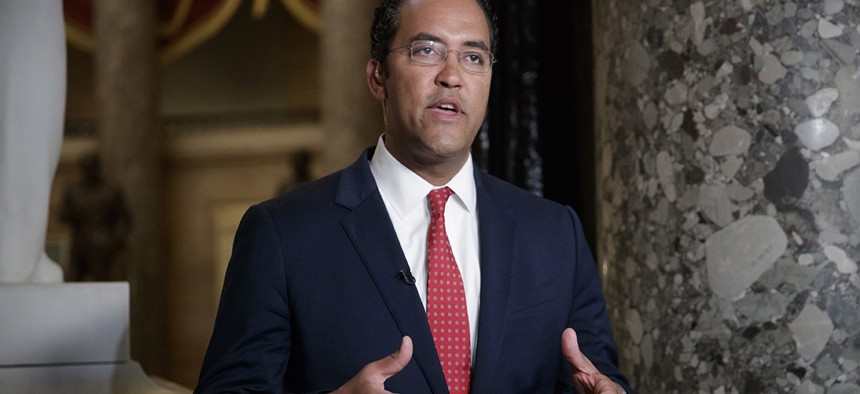FITARA Scores Are Up But More Work Lies Ahead

Rep. Will Hurd, R-Texas J. Scott Applewhite/AP
Lawmakers warned agencies not to rest on their laurels.
Federal agencies are making significant strides when it comes to IT modernization, but lawmakers on Wednesday warned they shouldn’t get complacent.
In the seventh biannual FITARA scorecard, nearly half of CFO act agencies improved their grades. The report, released Tuesday by the House Oversight and Government Reform Committee, showed 11 agencies boosted their grades and the remaining 13 maintained their previous scores.
It marks the first time that no agencies dropped grades or scored an “F” since the scorecard launched in November 2015.
“The FITARA scores highlight the progress this administration has made in IT modernization at the federal level,” Federal Chief Information Officer Suzette Kent told Nextgov. “While we have made meaningful progress, we recognize that there is still work to be done to bring the federal government into the 21st century.”
The Health and Human Services Department showed the greatest improvement of any agency over the last six months, jumping from a “C-” to a “B+.” Appearing before a House panel, HHS Chief Information Officer Ed Simcox credited the scorecard with galvanizing the agency’s IT improvements.
“At HHS, we like to say FITARA is both a law and a lifestyle,” Simcox told the House Oversight subcommittees on IT and Government Operations. Lawmakers said they created the system to elicit that exact response.
“These improvements by HHS are an example of how the FITARA scorecard positively incentivizes agencies to act,” IT subcommittee Chairman Will Hurd, R-Texas, said in his opening remarks. “The intent of the scorecard ... is not to paint agencies with a scarlet letter. Rather our intent is to incentivize behaviors and actions that result in better managed and more secure IT resources.”
Much of the improvement was driven by agencies increasing their use of software licensing agreements, which are expected to save the government $714 million this year alone, according to Carol Harris, director of IT management issues at the Government Accountability Office. But while overall reviews were rosy, Harris pointed out agencies still have a long way to go when it comes to data center consolidation and optimization.
“There’s money that’s left on the table if agencies sweep this under the rug and don’t make this a priority focus,” she said. Harris also cautioned against a proposal by the Federal CIO Council to change the way data center optimization is measures because the revision could mask how efficiently agencies are using computer servers and “fuzzy things up” with agency optimization strategies.
Government Operations subcommittee Chairman Mark Meadows, R-N.C., also expressed “significant concerns” over changing the standards, which he said could throw off agencies who have already worked with the current measurement in mind.
Harris added agencies are also struggling to comply with the Modernizing Government Technology Act, which requires them to pour savings from IT modernization efforts into working capital funds to support future projects. Only four agencies already stood up or have plans to create such a fund under the legislation, according to the scorecard.
HHS Deputy Chief Financial Officer Sheila Conley said the agency faces legal limitations to transferring earmarked resources to a non-appropriated fund, but lawmakers pushed back, saying the bill should overrule any previous regulations. Rep. Darrell Issa, R-Calif., floated the idea that President Trump could issue an executive order clarifying that fact.
Despite the overall improvements, it’s possible grades will go down in future iterations of the scorecard. Harris said the CIO Council is considering adding a cybersecurity category to the grading system, and the most recent version previewed what those scores would be. And they weren’t great.
If the cyber category were added, the preview showed 14 agencies would score a “D” or below.



